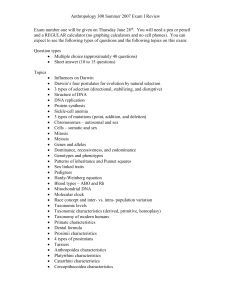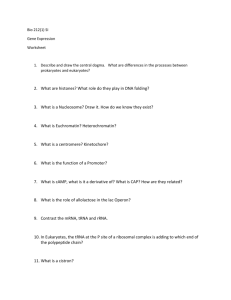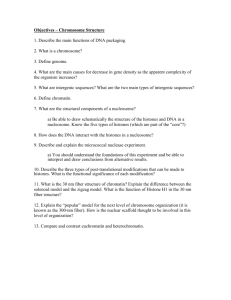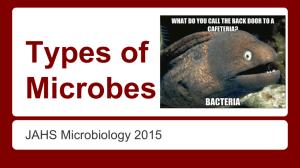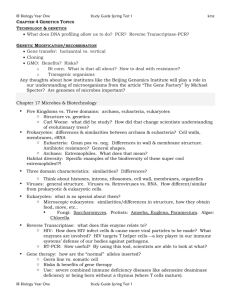Diversity
advertisement
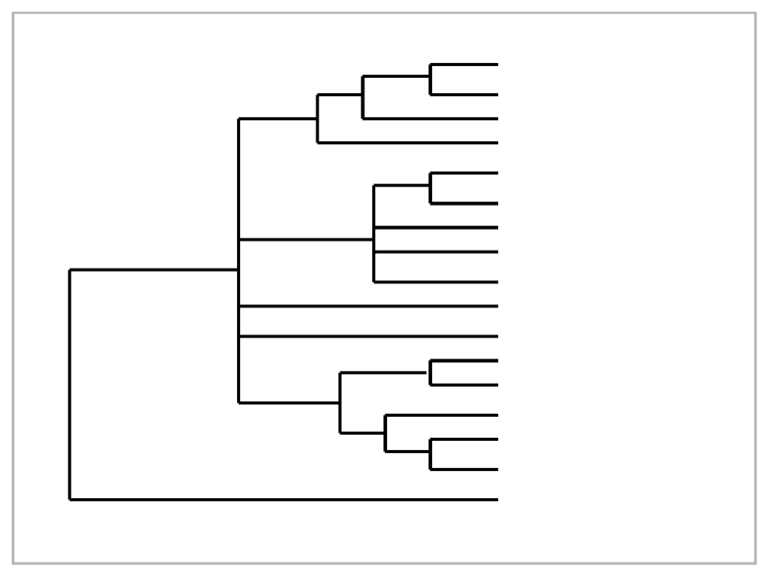
Chordates Tunicates Hemichordates Echinoderms Arthropods Tardigrades Nematodes Loricifera Priapulida Rotifers Cycliophora Annelids Molluscs Bryozoa Brachiopods Phoronids Platyhelminthes Biological diversity • How many species are there? • What is the taxonomic and geographical distribution of species number? – Why do some groups have more species than others? – Why are some parts of the world more species rich than others? • What are the major divisions and characteristics of biological diversity? – Bacteria v Eukaryotes – Archae v Eubacteria – Unicellular v multicellular • What is the time-scale of evolution? Insecta Algae Reptilia (Reptiles) 751,000 described species 26,900 described species 6,300 described species Plantae (Multicellular Plants) Pisces (Fish) Echinodermata (Starfish, etc.) 248,428 described species 19,056 described species 6,100 described species Non-insect Arthropoda (Mites, Platyhelminthes (Flatworms) Porifera (Sponges) Spiders, Crustaceans etc.) 12,200 described species 5,000 described species 123,151 described species Nematoda (Roundworms) Monera (Bacteria, Blue-green Mollusca (Mollusks) 12,000 described species Algae) 50,000 described species Annelida (Earthworms etc.) 4,760 described species Fungi 12,000 described species Amphibia (Amphibians) 46,983 described species Aves (Birds) 4,184 described species Protozoa 9,040 described species Mammalia (Mammals) 30,800 described species Coelenterata (Jellyfish, Corals, Comb 4,000 described species Jellies) 9,000 described species Species richness distribution Purvis and Hector (2000) Species richness distributions Purvis and Hector (2000) Species-number models in ecology and systematics • Species number reflects random process of speciation and extinction – Branching process • Distribution of population sizes likewise is a random process All partitions are equally likely • Innovations – Factors such as phytophagy (insects), warm-blooded nature (mammals, birds), flight (insects, etc.) enable new niches to be occupied • Distinguishing hypotheses is made difficult by the fact that life has only evolved once – Though comparing analogous structures (wings, phytophagy) is possible Linnaean taxonomic hierarchy • Carl Linnaeus: Swedish naturalist published Systema Naturae in 1735. Domain Eukaryota All nucleated organisms Kingdom Metazoa All animals Phylum Chordata All animals with backbone Class Mammalia Warm-blooded milk-producing vertebrates Order Primates Monkeys and apes (Super)Family Hominoidea Great apes Genus Homo Species sapiens Other spp. (e.g. habilis, erectus, extinct) Taxonomic difficulties • Assignment of a taxonomic level really reflects the systematist’s bias – There is no biological meaning to the taxonomic scheme • The mammalian order primates (including families, subfamilies and many genii and species) is younger than the genus Drosophila • Cladistic nomenclature represents each node of the phylogenetic tree – BUT there are a lot of internal nodes Features common to all life • Replication of DNA/RNA • Exchange of genetic material • Cells and cytoplasm (lipid bilayer membrane) • Gene expression and RNA translation machinery (ribosomes) • Energy converter (takes in energy and uses it to make ‘order’) • Evolution…. Excludes viruses The deep splits Largely unresolved – probably many horizontal transfer events. Archaea may be polyphyletic Prokaryota Eukaryota Kingdoms Metazoa Plantae Protista Fungi Archaea Euryarhcaeota Crenarchaeota Eubacteria Proteobacteria Chlamydias Spirochaetes Gram-positive Cyanobacteria Prokaryote v Eukaryote Prokaryote Eukaryote No nucleus Single coiled chromosome with few associated proteins Bacterial cell wall No organelles 17s RNA DNA in nucleus Chromosomes with many proteins (histones) No cell wall Organelles (mitochondria, chloroplasts) 18s RNA Archaea v Eubacteria Eubacteria Archaea Eukaryota No histones Histones associated with DNA Histones One RNA polymerase Several Several Formyl-methionine as start codon Methionine Methionine Rare and unusual introns Some splicing introns Spliceosomal introns The eukaryotes • Protists – Unicellular, enormously diverse – Many important human pathogens (Plasmodium, Giardia) • Fungi – Networks of hyphae, saprophytes – Many important agricultural pests (rusts, smuts, mildew) • Plants and green algae – Generate energy through photosynthesis (chlorophyll) • Animals – Consumers Chlorarachniophyte Euglena ciliate Red alga dinoflagellate diatom Green alga Endosymbiosis • Mitochondria and chloroplasts are descendants of bacteria that lived within the cells of early eukaryotes – Have their own genomes (circular) – Have prokaryote-like ribosome subunits and membrane proteins – No histones – Most genes lost or migrated to the nucleus Mitochondria from proteobacteria • Other symbioses at earlier stages – Tryptophan producing Buchnera in aphids – Rhizobium nitrogen fixing in legumes – Wolbachia Chloroplasts from cyanobacteria Specialisations of multicellular life • Differentiation of cell types • Coordinated development • Self / non-self recognition Platyhelminthes (flatworms, tapeworms, flukes) Arthropoda (insects, crustaceans, millipedes) Mollusca (snails, clams, squid) Echinodermata (starfish, sea-urchins, sea-cucumbers) Annelida (worms, leeches) Chordata (fish, amphibians, reptiles, birds, mammals) Loricifera Brachiopods Tardigrade Nemertea Bryozoa Micrognathozoa Colonial life Siphonophore Sponge Grades of body plan Non-living tissue/space Cell layer Two-layer Cnidaria Ctenophores Platyhelmintes Pseudo-coelomates Nematodes Rotifers Coelomates Molluscs Annelids Echinoderms Chordates Third layer can differentiate to provide internal organs Specialisations of animals • Specialised cell types (nerves, muscles) • Motility (as oppose to mobility) • Self / non-self cell recognition – Immune systems • Individual-individual communication – Chemical, visual, olfactory, auditory • Social organisation Polyploidy of early vertebrates Ancestral vertebrate and all invertebrates First round of polyploidisation (Amphioxus?) Second round of polyploidisation Differentiation, loss and rearrangement of genes Plant groups Liverworts Mosses Club-mosses Ferns Cycads Conifers Ginkgos Welwitschia Flowering plants Relative genome size: prokaryotes Organism Genome size (Mb) Gene number E. coli 4.6 4288 Mycoplasma genitalium 0.58 470 Buchnera spp. 0.64 583 Chlamydia pneumoniae 1.23 1052 Salmonella typhi 4.8 4600 Methanococcus jannaschii 1.67 1682 Yersinia pestis 4.65 4012 Relative genome sizes: eukaryotes Genes reported [1] Predicted genes Genome kilobases Fruitfly 25,728 35% 116,109 Human 30-40,000 61% 3,118,900 Mouse 24,948 (an extra 94,075) -- Mosquito 12,687 91% 231,408 Arabidopsis 28,129 -- 117,429 C. elegans 22,705 78% 100,270 Yeast 7,222 32% 12,156 Zebrafish 20,062 -- -- source: euGenes The C value paradox • Haploid DNA content in a cell can be measured by flow cytometry • In multicellular eukaryotes, there is no correlation between gene number and DNA content of cells – Drosophila 0.18 – Human 3.19 – Grasshopper 13.4 – Lungfish 140 • What is the value of the extra DNA? – Nuclear volume: more DNA correlates strongly with larger cells – None: DNA is a self-promoting opportunist which naturally increases unless checked by the time and energy demands of replication and transcription – (transposons, introns, LINES, SINES) Geological eras and epochs Time-line of life on earth Origin of life Oxygen appears Multicellular Cambrian life explosion First land plants First insects First vertebrates 3800MY 2500MY 1000MY 530MY 410MY Time-line of life on earth II First tetrapods Age of the dinosaurs First birds First Mammals 360MY 210MY 170MY First Modern Primates humans K/T extinction 100MY 60MY 65MY Chimp/ Human split 5MY 0.1MY
